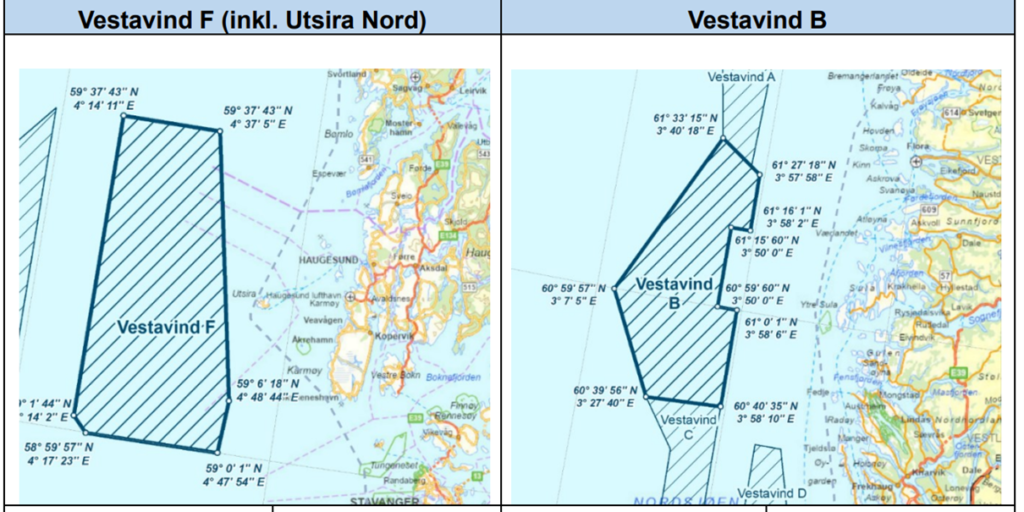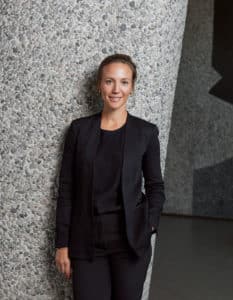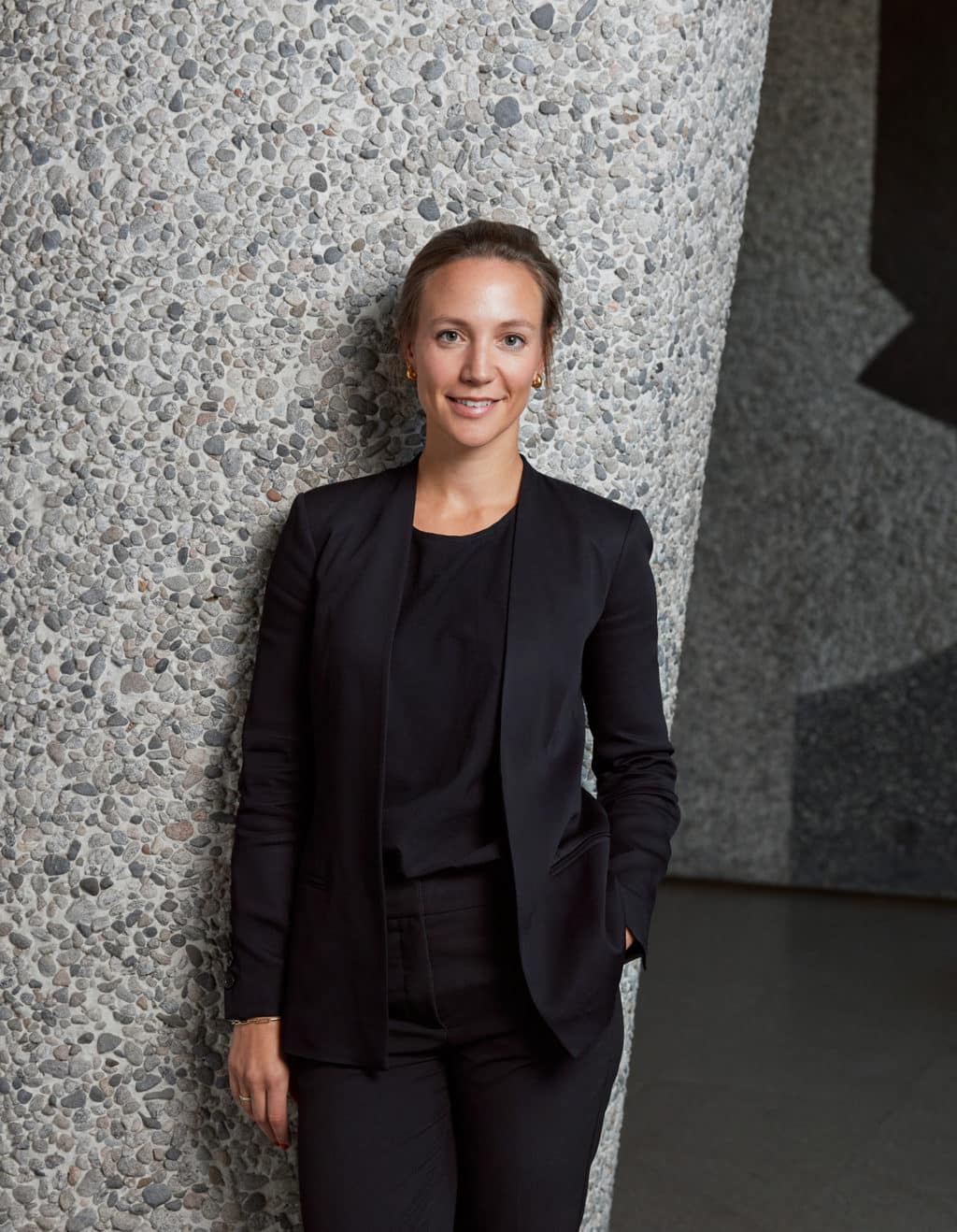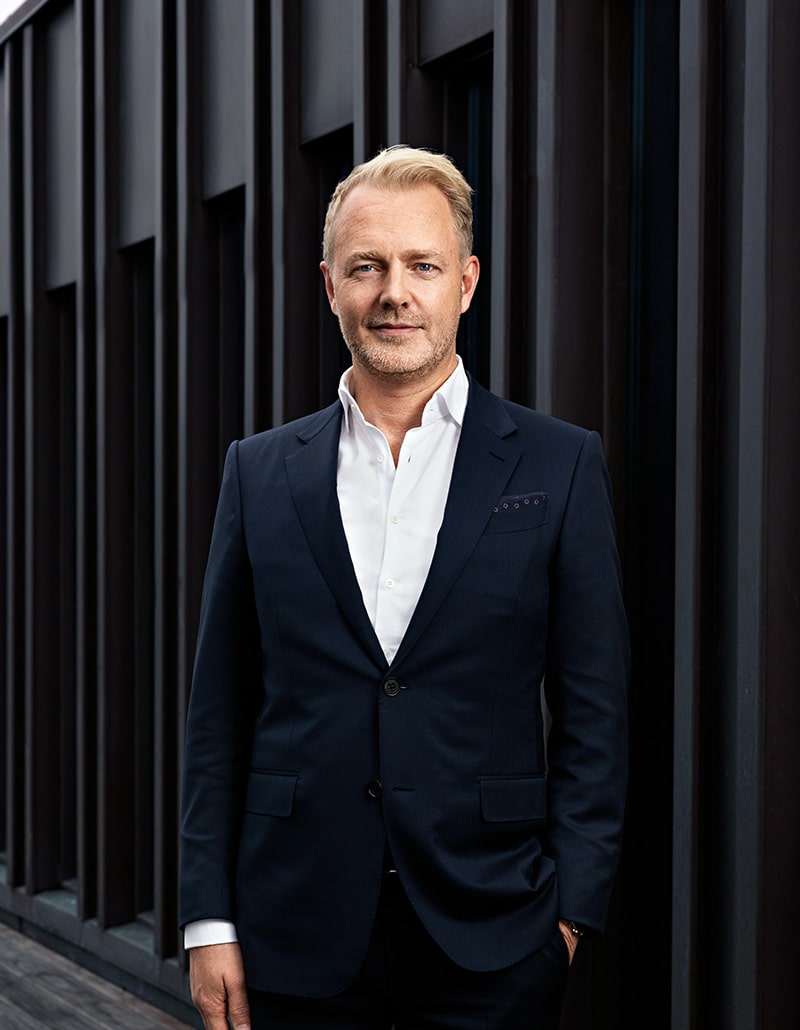New proposal for state aid for the first floating offshore wind areas in Norway
On 28 June 2024, the Norwegian government issued a proposal for the potential state aid models for the first floating offshore wind areas in Norway: Vestavind B (offshore the area between Bergen and Florø) and Vestavind F (offshore Haugesund and Karmøy).
The deadline for consultation replies is set to 23 August 2024. The original consultation proposal, can be found here, where anyone who wishes can also file a consultation reply.
Vestavind F is an extension of the Utsira Nord (UN) area, that has already been opened by the government, but the award procedure has been halted due to delays in approval of the state aid framework. The areas are planned for award following a competitive procedure to be held during 2025. Together with these areas, the area Sørvest F (an area for fixed turbines, an extension of Sørlige Nordsjø II) is also planned for award in 2025. However, this area is not included in the consultation proposal in question. Whether state aid will be available for developers in this area, is still not clear. The government has thus far made no communication in this respect.

Overview of the areas
The aid proposal has been prepared based on the EFTA Surveillance Authority (ESA)’s Guidelines on state aid for climate, environmental protection and energy – “CEEAG”, that correspond to the EU Commission’s guidelines. The aid model will be notified to ESA once the government has decided on the aid model following the consultation. A total budget for the amount of aid will then also be set. Comments received during the consultation on the amount of aid needed will be taken into consideration when setting the total budget.
The main takeaway is that the government proposes that the two-step model already proposed for UN, where the area is awarded following a competition based on qualitative criteria, and aid subsequently being awarded following a separate competition among the area awardees for aid. The criteria from UN are proposed to apply: Cost level, innovation and technological development, execution capability, sustainability and positive effects.
With respect to the subsequent competition for aid among the awardees, the government is considering (and soliciting views) on) two alternatives:
- A combined competition among all projects both at Vestavind B and Vestavind F.
- Two separate competitions for aid – a first one for areas inside Utsira Nord, and a second a later date for remaining areas, including projects inside Utsira Nord that were unsuccessful in the first competition.
Irrespective of what alternative is chosen, the government plans for introducing criteria designed to produce sufficient competition, i.e. that not all participating projects can be awarded aid. In this respect, the government is considering two over-arching models:
- Stating in the call for tenders what number of projects will be awarded aid, meaning that a fixed number of projects will be awarded aid
- Set out a total cap on the amount of aid across all projects, meaning that aid will be awarded to a set amount of MW, rather than a number of projects. If alternative 1) above is chosen, all projects will compete within the same cap, while if alternative 2) is chosen, an allocation between the two projects will have to be made.
The government plans for awardees who are not awarded aid to be able to apply for an extension of their exclusive right to the area and to be eligible for participating in subsequent competitions for aid, and/or to use other aid mechanisms generally available.
We note that the proposal’s alternative 1 (a combined competition) generates some uncertainty regarding whether a tenderer can tender for or compete for aid at both Vestavind B and Vestavind F, and at what stage the procedure is combined: At the tender stage, or at the aid competition stage? A combined competition for aid also raises issues of how the areas are to compete against each other, as the areas have different characteristics (depth, distance from shore, etc) that are likely to generate differences in the LCOE, thus meaning that the areas are not necessarily comparable. This remains to be answered by the government.
The government is also considering what aid model to apply:
- A two-way contract for difference (CfD) like the one seen on Sørlige Nordsjø II (the first (fixed) offshore wind area in Norway, where the CfD was entered into in the spring of 2024), or
- Direct investment aid, with cash payments of a share of the investment cost during the investment phase, up to a pre-fixed cap.
We note that the government does not present a third option of a combination of a CfD and investment aid – which could well be combined within the same total cap on the aid as in a “black or white” model as the one proposed. The government states that they solicit opinions in consultation replies on which of the two models market players prefer. If such a combined option is an alternative market players are interested in, it may be a topic to raise in a consultation reply.
The government has presented 16 questions to market players that they want the players’ views on during the consultation. We note that many of these question cover topics that were already covered in the consultation in 2023 on the aid model at Utsira Nord. We have listed the questions below, with the ones we consider most important highlighted. The question regarding whether the provided cost estimates are adequate and whether the assumptions on the level of aid required are correct should be particularly important, as this may be the only possibility to directly impact the allocated aid budget.
Questions asked to the market
- Given that energy production is to take place offshore in Vestavind F and Vestavind B, considering the technical and geographical conditions of these areas, do the respondents have any views on the Ministry’s restriction of the support scheme to floating offshore wind technology?
- Do the respondents have views on whether other technologies besides floating offshore wind could provide renewable power generation on the same scale in Vestavind F or Vestavind B?
- The Ministry requests the respondents’ views on which allocation model is best suited for floating offshore wind: 1) the proposed two-step model, or 2) the allocation of project areas and support in a single auction after prequalification. The respondents are asked to justify their preferred alternative, including assessing which of the two models most effectively facilitates the realization of floating offshore wind, the lowest possible level of support, and effective competition for project areas and state support.
- The Ministry requests any additional input on how the use or scope of competition in the allocation model can be designed to achieve effective competition for state support
- The Ministry requests input on the approach for awarding project areas in the two-step model, including the proposed main categories for qualitative criteria.
- The Ministry requests input on the various outlined alternatives for the support competition itself, see section 5.3 of the proposal. The Ministry also requests any additional input on how the support competition should be designed to achieve the highest possible competition for state support.
- The Ministry requests input on whether support should be awarded in the form of a two-sided difference contract or as investment support. Inputs should be justified and explain which of the alternatives is expected to result in the lowest support requirement.
- The Ministry requests feedback from the respondents on the Ministry’s assessment that floating offshore wind in the relevant areas will not be realized without support.
- The Ministry requests input on whether the estimates presented are in line with the respondents’ expectations regarding costs, revenues, and net present value, given the assumptions underlying the estimates.
- The Ministry requests input on whether any of the assumptions underlying the estimates should be adjusted. Respondents proposing adjustments are asked to justify the adjustments and describe how the changed assumptions might affect the estimates.
- The Ministry requests input on whether there are any other revenues besides power revenues that could affect the net present value, and if so, estimates of the size of such revenues.
- The Ministry requests input on whether there are any costs other than the stated investment and operating costs that could affect the net present value and if so, the size of these costs.
- The Ministry requests input on the proposed method for calculating subsidies per ton of CO2-equivalent avoided emissions. Respondents proposing alternative methods or adjustments to the proposed method are asked to describe and justify their preference for the alternative method.
- The Ministry requests input on the estimates for subsidies per ton of CO2-equivalents. Respondents proposing adjustments are asked to describe the assumptions and approach underlying the estimate.
- The Ministry requests input on the assessment of how the support interacts with other support measures.
- The Ministry requests input on the estimate for greenhouse gas emissions from floating offshore wind. Respondents proposing adjustments are asked to describe and justify the adjustment proposal.





